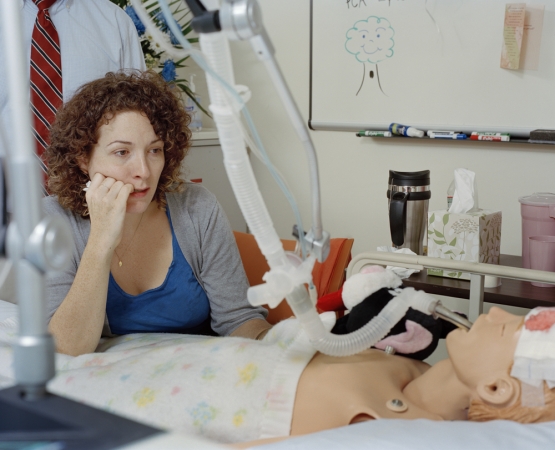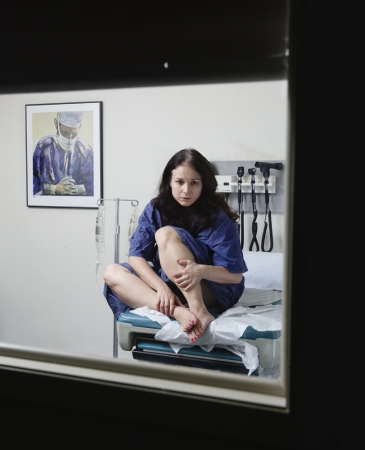From the artist's website: "Bedside Manner is a series of photographs and an 18-minute video that explores the little-known world of standardized patient simulations. Standardized patients (SPs) are professional medical actors who are trained to present particular sets of symptoms in order to help medical students improve their diagnostic skills and bedside manner. Routinely, SP encounters are filmed and evaluated by medical professors who observe the interaction of student and medical actor through a one-way mirror."
I am delighted Corinne May Botz got permission for this series. Botz is also the author/photographer of "The Nutshell Studies of Unexplained Death," which explored the groundbreaking crime scene dioramas of Frances Gleaner Lee in the 40s and 50s.
I really wish I could watch the video, which doesn't appear to be available on her site or linked from the New Yorker. According to Botz, the video "deconstructs a real-life standardized patient simulation. It also creates a complex portrait of the neurologist Dr. Alice Flaherty, who plays herself as a doctor, standardized patient and real patient." Intriguing!
I think I am most interested in exploring this further: "...acting and staged representations inform the interaction between patients and doctors in important ways. In order to express their suffering, real patients must learn how to act in doctors' offices." This is very insightful. Reminding learners that patients are "acting," too, may be of use to them. The more learners are able to demonstrate empathy, validation, confidence, respect and autonomy, the less likely patients are to feel the need to "perform" to demonstrate their distress.
In fact, I am strongly reminded of a blog post called "Performance Anxiety" about how an obese patient feels the need to be "terrifically cheerful" in order to receive adequate care. "...being cheerful and upbeat simply works to get a better quality of care in almost every instance. But it’s also enormously taxing, because it is, after all, a performance. Going in for my ultrasound appointment, I was nervous as hell, but I also knew that as soon as I met with the wand-wielder I’d have to push all that worry away and take on a lighthearted, friendly, cheerful persona if I wanted to be certain I’d be treated like a whole person... this pressure to perform under what are at best extremely uncomfortable circumstances does add an additional layer of stress... I resent having to put this happy-fat-lady caricature on. But it’s the most reliable method I know for securing good customer service when I’m meeting a specialist or any new-to-me medical professional for the first time."



